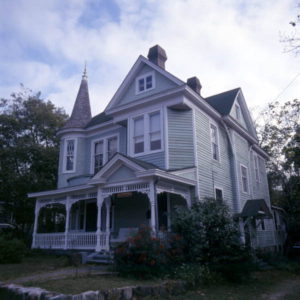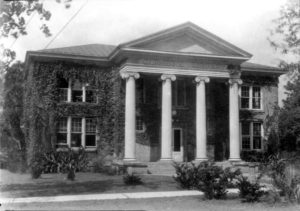I’ve always been interested in history. I’m not very interested in twentieth-century history, but start talking about things that happened 2,000, 5,000, or 10,000 years ago, and I’m hooked on listening and learning.
When I visited Ireland many years ago, I was struck by the incredible antiquity and history of several of the buildings where we ate and drank.
We don’t have any buildings that old that are still in operation in the United States. Except for a number of spots like St. Augustine, we don’t in Florida. Still, Florida’s history fascinates me, as do its historic towns.
St Augustine, 1822

Pedro Menendez de Aviles created St. Augustine, the oldest continuously inhabited city of European origin in the United States, in 1565.
However, Ponce de Leon was the first to explore the area around 1513, and he named Florida “La Florida” after the many flowering plants he discovered.
Rene Goulaine de Laudonniere, a Huguenot, investigated the area in 1564. Fort Caroline was subsequently erected further north, near present-day Jacksonville.
Pensacola, 1822

Pensacola was founded in the same year as St. Augustine. While St. Augustine is frequently referred to as “the oldest continuously inhabited European settlement in the US,” Pensacola was the first multi-year European settlement in the continental United States.
That settlement, which had been established in 1559, was abandoned two years later, in 1561, four years before St. Augustine.
Indigenous people did not live in the area where Pensacola presently stands. The location did, however, offer aboriginal tribes with hunting and fishing areas.
The nearest native settlement was around 40 miles east of Pensacola. The tribes in this area, as well as up to their ceremonial center at Mobile, Alabama, resided near waterways and mostly traveled by dugout canoe.
Tallahassee, 1824

For 10,000 years, Native Americans have lived in the hills surrounding Tallahassee. Nearly 30,000 people lived in the village that is now Florida’s capital.
One of the tribes that inhabited here, the Apalachee, traded ceramics as far north as the Great Lakes. They, like many of Florida’s other native tribes, built temple mounds.
Most indigenous tribes had been wiped out by sickness or violence by the 1700s. The name “Tallahassee” is derived from a Muskogean term that means “old field” or “old town.”
Fernandina Beach, 1825

Fernandina Beach, in Florida’s far northeastern corner, is located on Amelia Island, where the native Timacuan settlement of Napoyca formerly stood. Fernandina’s history is inextricably linked to that of Amelia Island.
Amelia Island is the only place in the United States where eight different national flags have flown, earning it the nickname “Isle of 8 Flags.”
France, Spain, the United Kingdom, the Republic of East Florida, the Republic of the Floridas, Mexico, the United States, and the Confederate States of America were among the eight nations.
Apalachicola, 1827

Apalachicola sits on Florida’s Big Bend, the place on the upper Gulf Coast where Florida’s peninsula bends into the rest of the country.
It is a small hamlet at the mouth of the Apalachicola River, which drains into Apalachicola Bay, and is famous for its fresh seafood, particularly oysters.
The name Apalachicola is derived from multiple Hitchiti terms that mean “people from the other side of the river.” It was named after the indigenous people who lived in the area and later became the name of the river, bay, and town.
Key West, 1828

Key West, an anagram of Cayo Hueso, is located 150 miles from mainland Florida and 90 miles from Cuba. Ponce de Leon discovered the island in 1521 and named it Cayo Hueso (“Bone Island”) because of the bleached limestone found on the area.

